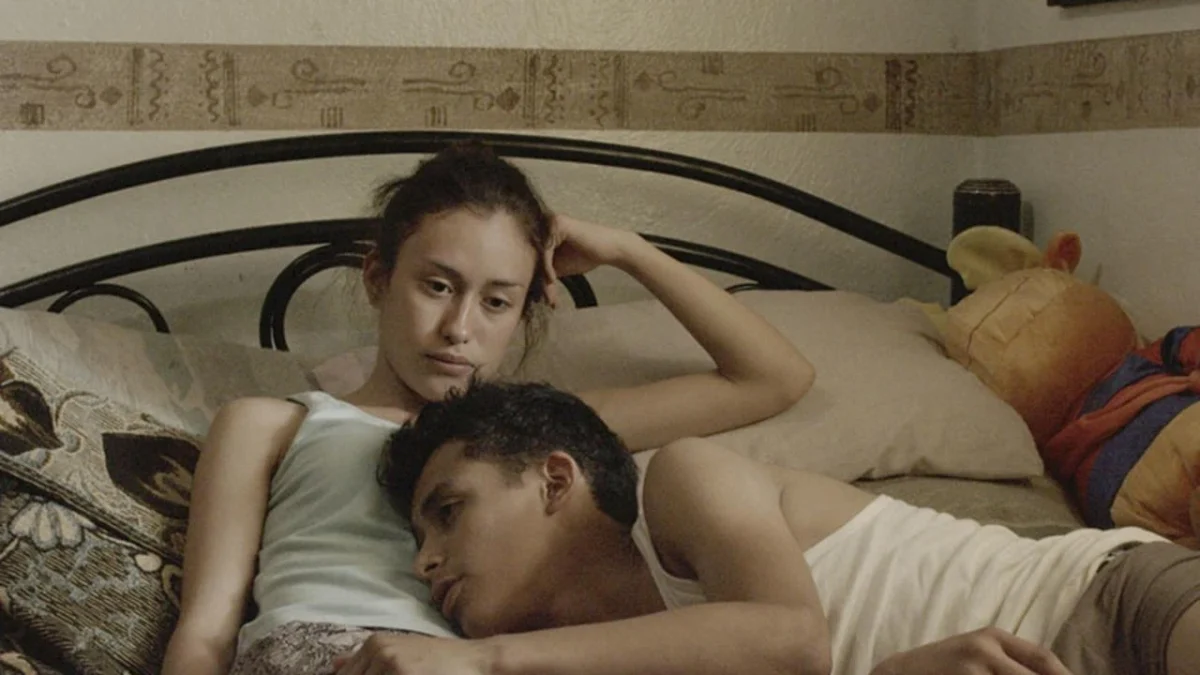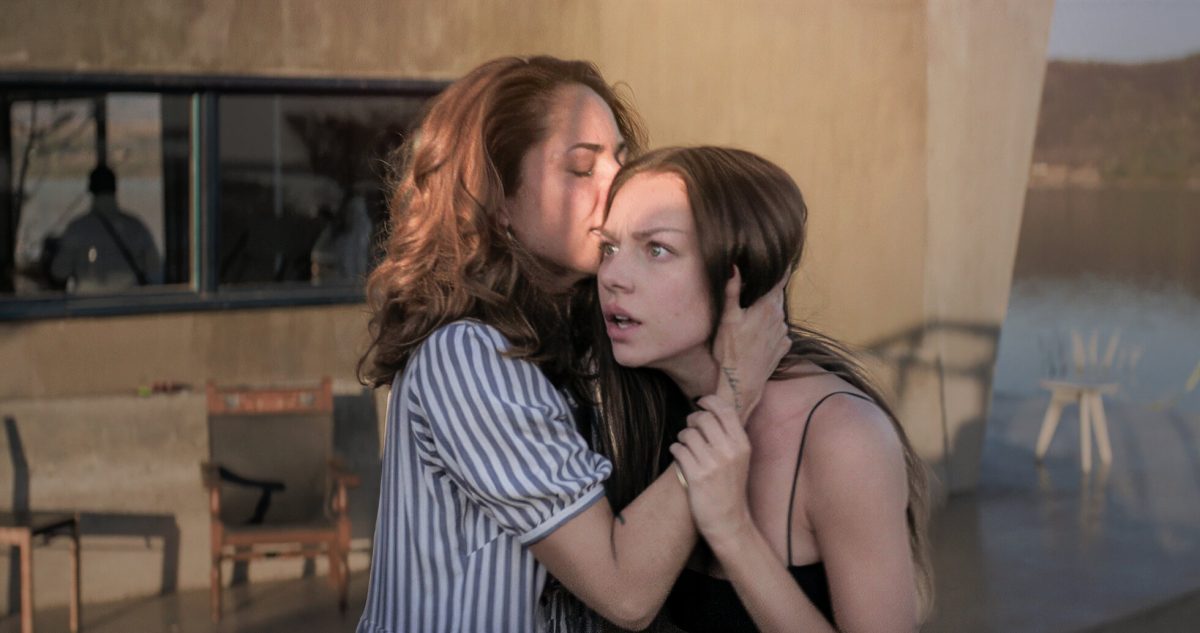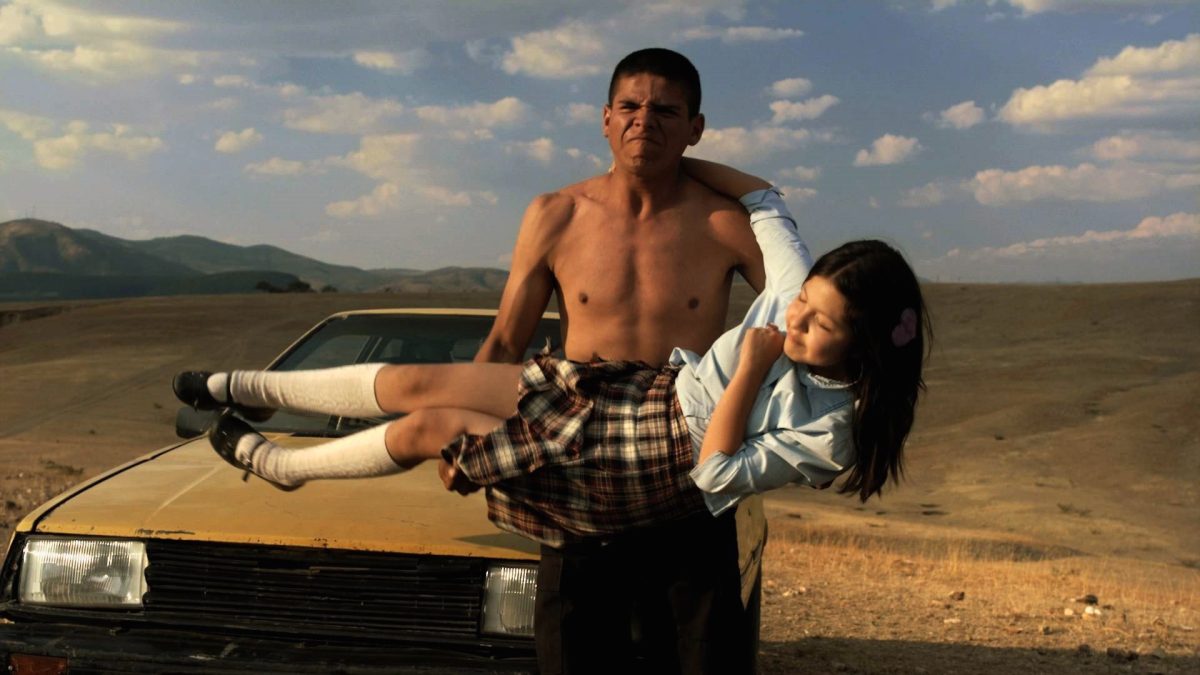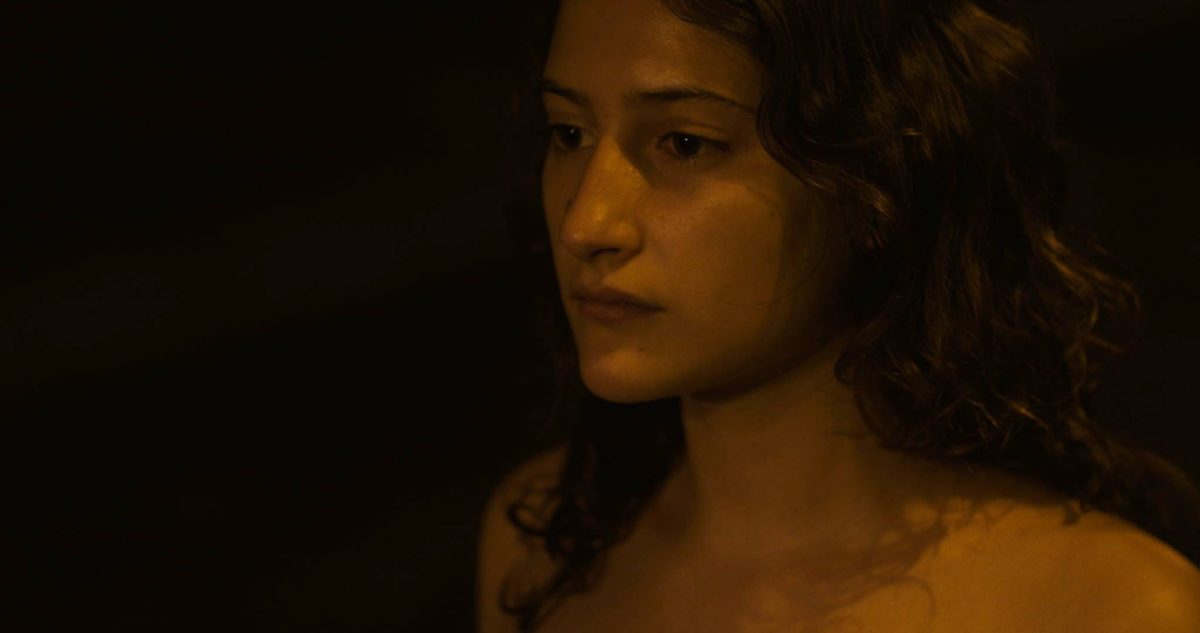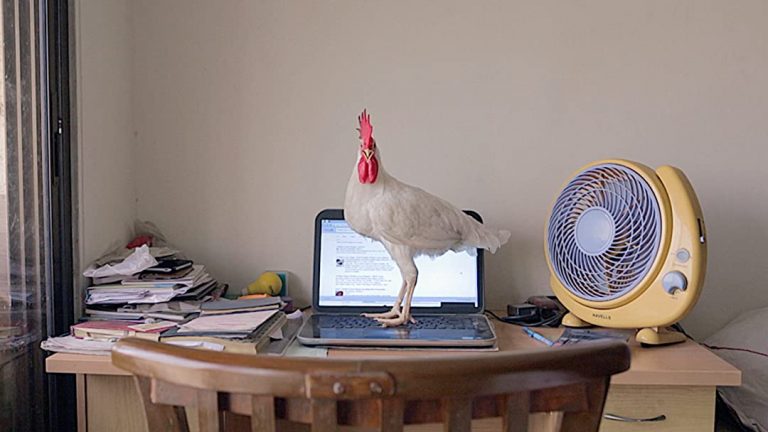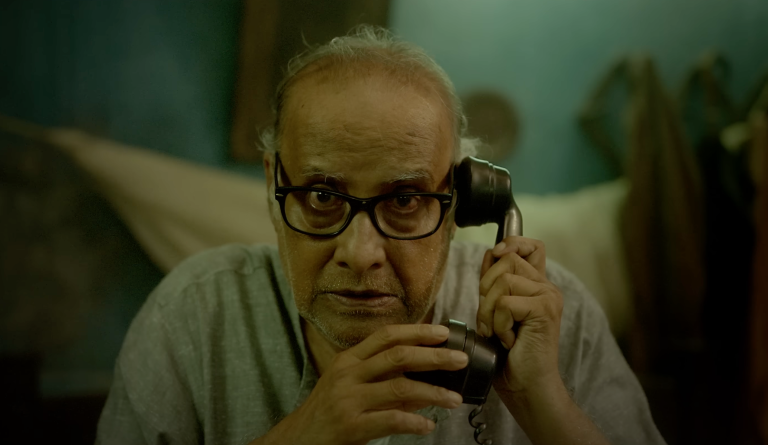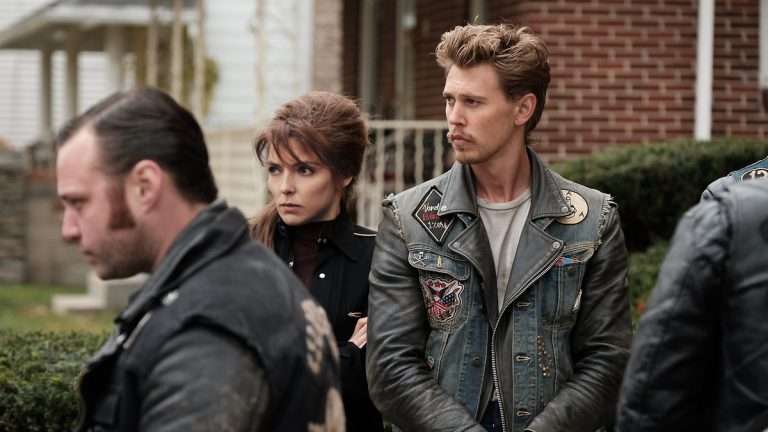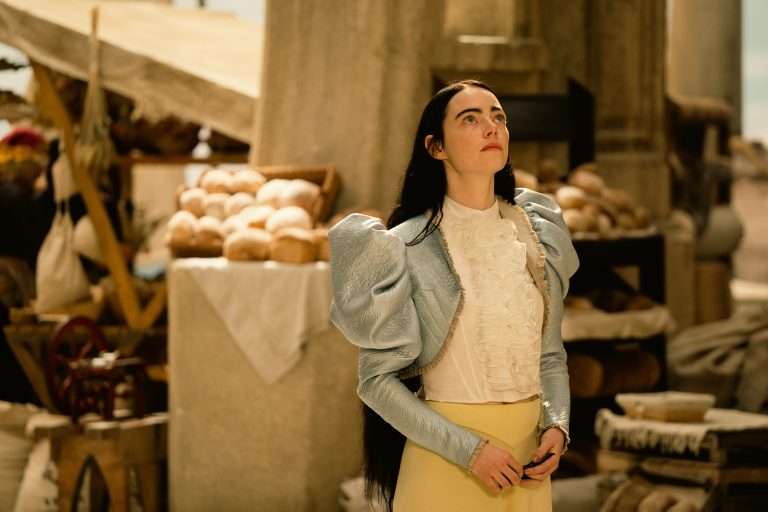Amat Escalante is a Mexican filmmaker whose cinema dares to dwell in spaces most would rather avert their gaze from. Emerging in the early 2000s, Escalante has built a body of work marked by sparse dialogue, clinical detachment, and unsettling intimacy. His characters often exist on the margins — working-class, voiceless, and wounded — and his camera observes them not with sentimentality, but with a precise and unsparing eye.
Early in his career, Escalante worked closely with fellow Mexican auteur Carlos Reygadas, serving as an assistant director on “Batalla en el Cielo” (2005). Reygadas would later co-produce Escalante’s debut feature “Sangre,” and their shared cinematic sensibilities — long takes, non-professional actors, and existential brutality — continue to resonate across both bodies of work.
Escalante’s first short film, “Amarrados” (2002), shot in black and white with handheld urgency, introduces a homeless child sniffing glue to numb the pangs of hunger and trauma. From this earliest effort, themes of abuse, neglect, and bodily violation are laid bare. In “Esclava” (2013), part of an anthology on the seven deadly sins, he explores the brutal commodification of female bodies through the story of a young girl trafficked by her husband. Escalante’s vision of lust is void of pleasure; it is transactional, violent, and numbing.
His first feature, “Sangre” (2005), presents a suffocating domestic routine that fractures when a man fails to protect his estranged daughter. “Los Bastardos” (2008) shifts focus to undocumented Mexican laborers in the U.S. “Heli” (2013), which won Best Director at Cannes, confronts the drug war with startling explicitness. “The Untamed” (2016) uses sci-fi to probe desire and repression. His latest, “Lost in the Night” (2023), fuses political critique with Shakespearean undertones.
Here is a list of films made by Amat Escalante, ranked in order:
7. Amarrados (Tied-up, 2002)
“Amarrados” (2002) is Amat Escalante’s first short film to receive widespread recognition. Shot in stark black-and-white and the only film in his oeuvre to feature entirely handheld camerawork, one wonders if this was due to budgetary constraints or if the story itself demanded such visual restlessness. It follows a homeless child in Mexico addicted to glue sniffing — his whispered monologue frames the drug as his only escape: “It makes me fly like Superman. Hunger only feels like a tickle.”
Like in “Heli” and “Esclava,” Escalante opens with an image we revisit multiple times — the child, bound to a wooden post in the middle of nowhere. The film quickly makes clear what kind of world this is: hunger, neglect, abuse. The boy is taken in by an old woman, who initially plays the piano and sings a haunting lullaby, only to later abuse him while he’s high. We’re spared explicit visuals, but his confession is telling: “She ties me up and licks me between the legs.”
In a moment of rage reminiscent of Travis Bickle, the boy breaks into her home, knife in hand, ready, perhaps, to reclaim agency. But he collapses, weakened, perhaps by hunger, perhaps by despair. The next time we see him, he’s again tied to the post. In “Amarrados,” Escalante establishes much of what will define his cinema: cycles of abuse, the failure of escape, and a bleak, unflinching view of systemic violence — all through the gaze of those abandoned too early by the world.
6. Esclava (Slave, 2014)
“Esclava” is a 2013 short film by Amat Escalante, made as part of an anthology exploring the Seven Deadly Sins. Escalante, unsurprisingly, takes on Lust. The film opens with an image so harrowing it’s difficult to look at — a raped girl lies naked in a cornfield, her right hand severed from her body. The serenity of the landscape stands in sharp contrast to the horror embedded in it — we need no further context to understand what’s transpired.
We’re then taken into the life of Ana, a young girl who falls for a boy named Sam. They’re soon married — a cheerful wedding, family, and friends, the illusion of love. It doesn’t last. Sam forces Ana into prostitution. Cirilo Recio, familiar from “Sangre,” appears as one of her many dispassionate clients. What follows is a sequence of unrelenting sexual violence, where Ana is reduced to an unresponsive body, crying, resisting, or simply lying still.
She eventually throws herself from a window, bloodied and broken, but survives and runs. Sam chases her, and both end up at a police station. Charges are filed against both, and the film closes on Ana — bruised, handcuffed, and defeated. Unusually, Escalante uses voiceover narration here — as he did in “Amarrados” — allowing Ana to lay bare her experience in plain words. The story is simple, but its treatment is where Escalante’s discomforting power lies. “Esclava,” like much of his work, wounds the viewer quietly, deeply, and lastingly.
See More: 10 Great Dysfunctional Family Films of the Decade (2010s)
5. Lost In The Night (Perdidos en la noche, 2023)
“Lost in the Night” is Amat Escalante’s latest feature, presented in the Cannes Premiere section of the 2023 festival. It follows Emiliano, a young man haunted by the disappearance of his activist mother after protests against a mining company. His pursuit of truth leads him into the orbit of an affluent art-world couple whose home — a bizarrely curated space — becomes the film’s central setting.
Though supported by his girlfriend Jazmin, Emiliano suffers from quiet tremors whenever a blast echoes from the mines. A chance encounter with a dying policeman triggers the unraveling. Before the officer can reveal crucial information, his attendant intercepts the note, but Emiliano remembers the address, which leads him to the couple’s home. He’s hired for errands, and Escalante begins the slow reveal toward inevitable devastation.
Rigo, the artist husband, evokes Macbeth — plagued by guilt after turning a dead vigilante into artwork, earning a bounty on his head. His actress wife mirrors Lady Macbeth, silencing his confession and ultimately killing him to protect their family and their secrets. Their daughter, Monica — an influencer who documents everything — is drawn to Emiliano.
But as the truth surfaces, she betrays her mother, caught between love and moral reckoning. She echoes Ophelia, torn and unmoored. In Emiliano, there are shades of Hamlet — consumed by inquiry, unable to move on. He even sees his mother’s body floating beneath the couple’s property, a ghostly echo of Hamlet’s father.
Escalante meditates here on the quiet horror of complicity. Violence, he reminds us, doesn’t require action — mere collusion is enough to poison the soul. “Lost in the Night” is a slow, burning tragedy of conscience, driven by the burden of unspoken crimes.
4. Sangre (Blood, 2005)
“Sangre,” Amat Escalante’s debut feature, premiered in the Un Certain Regard section at Cannes in 2005. It follows Diego, a middle-aged man who counts foot traffic in a nameless government building. He lives a quiet, monotonous life with his second wife in a cramped one-bedroom apartment. Their attempts to escape the banality — TV, occasional sex, feel mechanical and emotionally barren. She delivers fast food for a living.
The film’s conflict arrives when Diego’s estranged daughter from his first marriage calls, asking to stay with him. His wife refuses, and Diego, instead of insisting, finds her a room in a cheap hotel. There, the girl quietly spirals into depression and ultimately kills herself. “Sangre” plants the thematic seeds that Escalante would later cultivate: lives hemmed in by economic stagnation, a lack of intimacy, and an atmosphere of casual brutality. His lens is clinical, almost deadpan — unscored, minimally lit, with long takes that refuse to flinch. The camera observes time rather than dramatizing it.
A moment of pure Escalante arrives when Diego returns from disposing of his daughter’s body and finds his wife lying naked on the floor, legs apart — a grotesque image of emotional disconnection. Dialogue is sparse, and emotional release, nonexistent. The title suggests gore, but “Sangre” is about blood ties — about what we owe to those closest to us, and what happens when we fail. In the final scene, Diego finds a fallen fruit under a tree and places it gently in his car. It’s a quiet elegy for the daughter he could not save.
3. Heli (2013)
A grim, provocative plunge into the plague of drug violence in Mexico, “Heli” follows a young man whose ordinary life is torn apart by a brutal chain of events. The film opens with a cold, jarring image: a boot stomping his bloodied face as he’s thrown into a truck. A boy is seen hanging from a bridge.
Escalante then unfolds a reverse inquiry into how things came to be. The camera lingers inside the reversing jeep as it pulls away from the suspended body — a disturbing calm that sets the tone. Competing at Cannes in 2013, “Heli” earned Escalante the Best Director award, marking his international breakthrough.
Heli works at an automobile factory alongside his father. But the film’s tension stems from his teenage sister Estella’s relationship with Alberto, a trainee in the special forces. This affair triggers a cycle of violence. Alberto, like Llewelyn in “No Country for Old Men,” sets events in motion and vanishes early. Escalante uses no music, allowing silence to echo the despair. His cinema thrives on provocation, but not for its own sake, rather to reflect a reality stripped of mercy. Heli’s wife, struggling with postpartum depression, pushes him away. He, too, rejects a moment of escape offered by a female officer, trapped between grief and responsibility.
What “Heli” ultimately portrays is the quiet erasure of innocence. Escalante is almost Dostoevskian in his worldview, where guilt is ambient and punishment is inevitable. One need not commit a crime to be swallowed by its consequences. In Escalante’s Mexico, proximity to violence is reason enough for destruction.
2. Los Bastardos (The Bastards, 2008)
As the title suggests, “Los Bastardos” follows the life of two undocumented migrants, Jesus and Fausto, from the bastardized land of Mexico, whose people are often subjected to ridicule in the land of opportunities, the United States of America. Focusing on a single day in the lives of two men, one of whom is actually a late teenager, the film unfolds with chilling restraint. They begin the day as workers and end it as reluctant assailants.
The film opens with an almost never seem to be ending shot of two men walking through a concrete riverbed — ants beneath a sky of steel. In “Los Bastardos,” Amat Escalante invites us into the silence of their lives. Jesús and Fausto, undocumented Mexican workers, are not heroes or villains. They are weary bodies in a land that does not see them.
The men are hired to kill a woman, sent by her husband. But when they break in, they’re too hungry, too tired. They eat. They rest, and they get high. She doesn’t scream — just watches, lost in her own numbness. The film shifts from suspense to a weird, slow burn of human tension. Escalante doesn’t give them a backstory or moral justification. He doesn’t need to. You see everything in their faces — the weight of being disposable. The silence of the film says more than dialogue ever could.
There’s a moment when one of them makes a soft, almost awkward advance toward her. It’s not romantic — it’s something sadder. They’re not trying to reclaim power. They’re just trying to feel alive, even if it’s in someone else’s house. You don’t leave “Los Bastardos” feeling good. But you do leave shaken. Escalante flips the usual home invasion story and forces us to sit with the humanity of people we’re trained to fear, not to excuse them, but to ask why they ended up there at all.
1. The Untamed (2016)
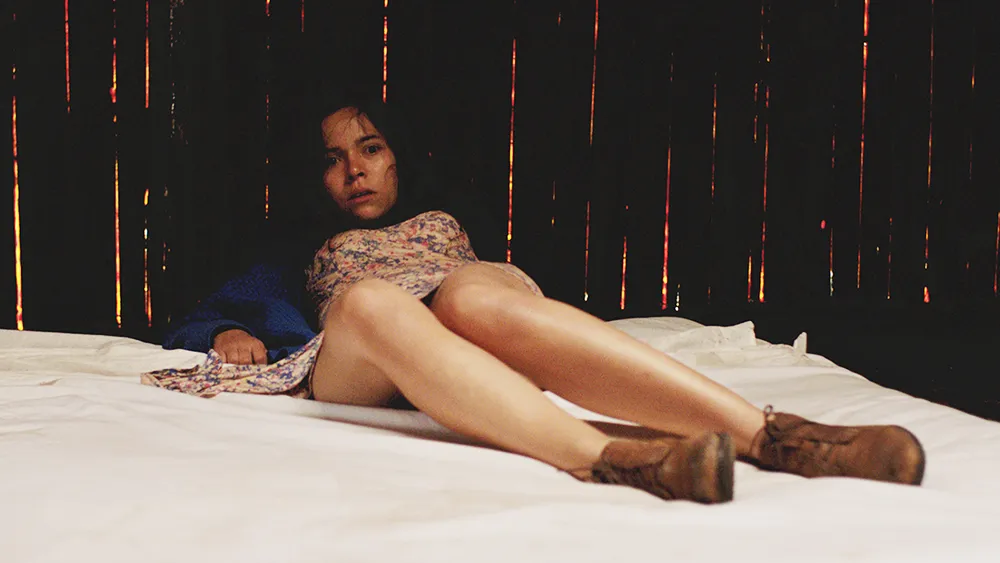
What is the cost of sexual desire?
If Amat Escalante merely hinted at this question in “Heli,” he confronts it head-on in “The Untamed” (2016), which won him the Silver Lion for Best Director at Venice. The film weaves together the lives of several characters orbiting a strange creature — one that offers ultimate pleasure, but not without consequences.
A modern take on Andrzej Zulawski’s “Possession” (1981), “The Untamed” uses science fiction and body horror to externalize the inner violence of suppressed desire. We begin with Veronica, a young woman who has been physically wounded by the creature. Has it grown tired of her? She’s touched an unreachable ecstasy — so profound that no human experience could ever match it. That unbearable knowledge haunts her.
Veronica enters the life of Alejandra, a young mother trapped in a loveless marriage. Her husband is secretly involved with his brother-in-law, leaving Alejandra emotionally and physically starved. As their stories intertwine, Escalante resists the need to explain. The creature remains elusive. We see only glimpses — a crater where animals are lost in frenzied copulation — but its mystery holds.
By the end, the question isn’t what the creature is, but who — or what — is The Untamed? Is it the beast that chooses who to pleasure and punish? Are they Alejandra and Veronica, women who sacrifice men to fulfill their desires? Or is it desire itself — dangerous, unrelenting, uncontainable?
Can desire be tamed? Should it be? What void does it leave behind once touched by something otherworldly? With “The Untamed,” Escalante moves beyond social realism into an erotic, cosmic allegory. He dares to explore impulses caged by culture, asking: What happens when that cage finally shatters?


